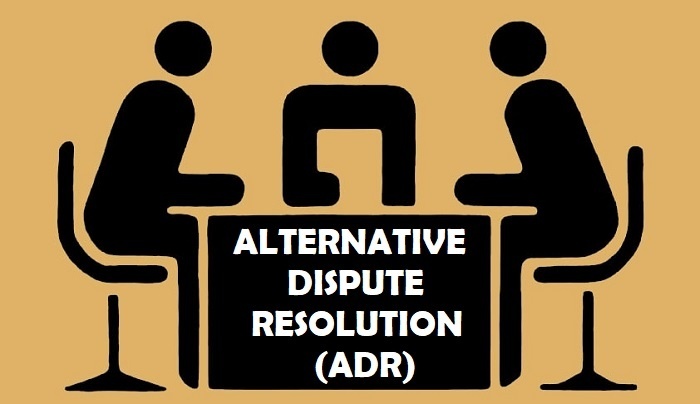Introduction:
Alternative Dispute Resolution (ADR) refers to a set of methods used to resolve conflicts outside of traditional courtroom litigation. ADR processes are often more flexible, cost-effective, and quicker than taking a dispute to court. They offer parties an opportunity to reach a resolution in a more collaborative manner, without the formality of a trial. ADR can be applied in various types of disputes, including civil, commercial, family, and employment issues.
This guide will explore the various types of ADR, its benefits, and the steps involved in the ADR process.
Table of Contents
ToggleWhat is Alternative Dispute Resolution (ADR)?
Alternative Dispute Resolution is a collection of processes aimed at resolving disputes without resorting to formal litigation. ADR can be used at any stage of a conflict, whether before, during, or after a lawsuit. These methods typically involve a neutral third party who helps facilitate a resolution.
ADR processes include:
Mediation
Arbitration
Negotiation
Neutral Evaluation
Conciliation
While ADR is not legally binding in all cases (such as in mediation), it can be a less adversarial and more efficient way to resolve disputes compared to going to court.
Types of Alternative Dispute Resolution
1. Mediation
Mediation is a voluntary process in which a neutral third party (the mediator) facilitates communication between the disputing parties to help them reach a mutually agreeable resolution. The mediator does not impose a solution but works with both sides to find common ground.
Benefits:
The mediator is impartial and does not make decisions.
The process is confidential.
It is a cost-effective and quicker alternative to litigation.
It allows for more creative and flexible solutions that might not be available in court.
Applications: Mediation is commonly used in family law disputes (e.g., divorce and child custody), labor disputes, business conflicts, and community or neighborhood disagreements.
2. Arbitration
Arbitration is a more formal lawbugs.com/ process where a neutral third party, known as the arbitrator, hears both sides of the dispute and makes a binding decision. The arbitration process is somewhat similar to a trial, but it is typically less formal and faster.
Benefits:
The decision made by the arbitrator is legally binding and enforceable.
It provides a faster resolution compared to traditional litigation.
It is often less expensive and more flexible than going to court.
Arbitrators are often experts in the specific area of the dispute, ensuring a well-informed decision.
Applications: Arbitration is widely used in commercial contracts, consumer disputes, labor disputes, and international trade agreements.
3. Negotiation
Negotiation is the simplest form of ADR, where the parties involved in the dispute directly communicate with one another to reach a settlement. It may or may not involve a neutral third party, but the goal is for the parties to come to a mutually acceptable agreement.
Benefits:
It gives the parties full control over the outcome.
It is informal, flexible, and often the least expensive option.
It helps preserve relationships because the focus is on collaboration rather than adversarial tactics.
Applications: Negotiation is commonly used in business disputes, real estate conflicts, personal injury claims, and contract disputes.
4. Neutral Evaluation
Neutral evaluation involves a neutral third party (often an expert in the area of dispute) who provides an unbiased assessment of the strengths and weaknesses of each side’s case. This evaluation can help both parties gain a clearer understanding of the likely outcome of a case if it went to court.
Benefits:
It provides a neutral, objective perspective that can aid in settlement.
It allows parties to gain insight into the strengths and weaknesses of their positions.
It can speed up negotiations by clarifying issues early in the dispute.
Applications: Neutral evaluation is often used in legal disputes, especially in complex cases involving technical or specialized issues, such as intellectual property or construction contracts.
5. Conciliation
Conciliation is similar to mediation, but the conciliator may take a more active role in proposing solutions to the parties. Conciliation is more likely to involve the conciliator suggesting a resolution to the dispute, unlike mediation, where the mediator merely facilitates communication.
Benefits:
It provides a more active third-party role in helping to resolve the conflict.
It can lead to a faster resolution than mediation in some cases.
The conciliator may bring new ideas or perspectives to help settle the dispute.
Applications: Conciliation is often used in labor disputes, consumer disputes, and family matters.
Benefits of Alternative Dispute Resolution
ADR processes offer numerous benefits over traditional litigation. Some of the most notable advantages include:
1. Cost-Effectiveness
Litigation can be expensive due to court fees, attorney costs, and other associated expenses. ADR, particularly mediation and negotiation, are generally more affordable, making it accessible for individuals and businesses alike.
2. Time Efficiency
Court cases can take months or even years to resolve due to the complexity of the legal system and the heavy caseloads of courts. ADR processes tend to be faster, allowing parties to resolve disputes in a matter of weeks or even days.
3. Confidentiality
In contrast to court proceedings, which are typically public, ADR processes are private and confidential. This is particularly beneficial for businesses and individuals who want to protect their reputations or maintain privacy about sensitive matters.
4. Flexibility and Control
ADR offers more flexibility in terms of scheduling, procedures, and outcomes. The parties involved have more control over the resolution and can work together to create mutually acceptable solutions, rather than having a decision imposed upon them by a judge or jury.
5. Preservation of Relationships
Because ADR processes, particularly mediation and negotiation, emphasize collaboration and communication, they are often more conducive to maintaining or improving relationships. This is especially important in family law, business partnerships, or workplace disputes, where long-term cooperation may be necessary.
6. High Success Rate
Mediation and other ADR processes have a high success rate. Parties often reach a resolution that satisfies both sides, leading to fewer appeals and a higher degree of satisfaction with the outcome.
The ADR Process: What to Expect
While each ADR process is unique, there are general steps you can expect in most cases:
Initiation: One or both parties initiate the ADR process. This may involve selecting the type of ADR, agreeing on a neutral third party (e.g., a mediator or arbitrator), and setting a time and place for the process.
Preparation: Both parties may be asked to submit relevant documents, evidence, or written statements about the dispute in advance.
The Session: The parties will meet with the neutral third party. Depending on the type of ADR:
In mediation, the mediator will facilitate communication and help the parties work toward a solution.
In arbitration, the arbitrator will listen to both sides, review evidence, and make a binding decision.
In negotiation, the parties may directly communicate to reach a mutually acceptable agreement.
Resolution: If an agreement is reached, it may be formalized in writing (such as a settlement agreement or consent award). In arbitration, the decision is binding and enforceable. In mediation, the agreement is typically non-binding unless a formal contract is signed.
Post-ADR Actions: If a settlement is reached, both parties will implement the terms of the agreement. If ADR does not result in a resolution, the dispute may proceed to litigation.
Conclusion
Alternative Dispute Resolution (ADR) provides an effective way to resolve disputes outside of traditional courtroom litigation. With its emphasis on collaboration, cost-effectiveness, and flexibility, ADR offers a viable solution for individuals and businesses seeking quicker, more efficient, and confidential resolutions to their conflicts.
Whether you’re involved in a commercial, family, or personal dispute, exploring ADR options like mediation, arbitration, or negotiation can lead to a more satisfactory and timely resolution. Keep in mind that choosing the right type of ADR depends on the nature of your dispute, your goals, and the willingness of the parties to work together toward a solution.





